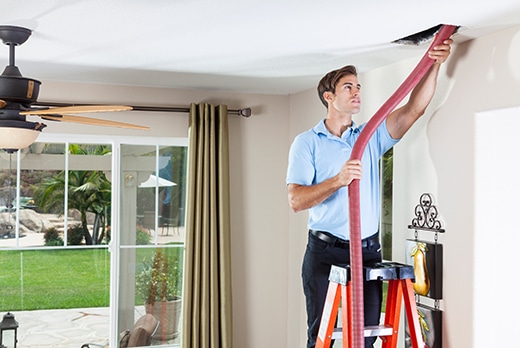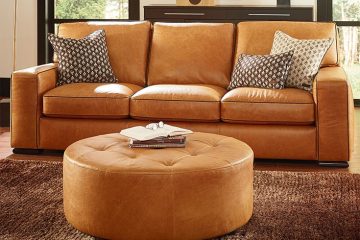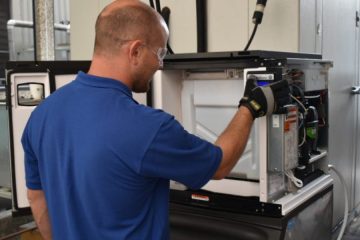Maintaining optimal HVAC (Heating, Ventilation, and Air Conditioning) performance is important for ensuring indoor comfort and air quality. One often overlooked aspect of HVAC maintenance is air duct cleaning. Over time, air ducts accumulate dust, debris, mold, and other contaminants, which can hinder system efficiency and indoor air quality. Here is how frequently air duct cleaning should be scheduled to achieve optimal HVAC performance:
Air ducts serve as the respiratory system of a building, circulating conditioned air throughout the space. However, when ducts become dirty or clogged, they can compromise HVAC performance in several ways:
Reduced Airflow
Accumulated debris in air ducts restricts airflow, forcing the HVAC system to work harder to maintain desired temperatures. This can lead to increased energy consumption and higher utility bills.
Decreased Efficiency
A clogged duct system makes it harder for air to circulate efficiently, leading to uneven heating or cooling within the building. As a result, some areas may be too hot or too cold, creating discomfort for occupants.
Poor Indoor Air Quality
Dust, mold, pollen, and other contaminants trapped in air ducts can be recirculated into the indoor environment, contributing to allergies, respiratory problems, and indoor air pollution.
HVAC System Wear and Tear
When air ducts are dirty, the HVAC system must work harder to deliver conditioned air, leading to increased wear and tear on components such as fans, motors, and coils. This can shorten the lifespan of the system and result in costly repairs.
The frequency of air duct cleaning in Orlando, FL depends on various factors, including the type of building, occupancy levels, environmental conditions, and the presence of indoor air pollutants. While there is no one-size-fits-all answer, here are some general guidelines for scheduling air duct cleaning:
Residential Buildings
For residential homes, it is recommended to have the air ducts cleaned every 3 to 5 years. However, certain factors may warrant more frequent cleanings. Homes with pets, smokers, or residents with allergies may benefit from more frequent cleaning to maintain indoor air quality.
Additionally, if there has been recent construction or renovation work in the home, it is advisable to schedule an air duct cleaning afterward to remove construction dust and debris that may have accumulated in the ductwork.
Commercial Buildings
In commercial buildings, air duct cleaning should be performed more frequently due to higher occupancy levels and increased potential for contaminants. Depending on the building size and usage, commercial properties may require air duct cleaning every 2 to 3 years.
Industries with specific air quality requirements, such as healthcare facilities, laboratories, and food processing plants, may need more frequent cleanings to meet regulatory standards and ensure a safe and healthy environment for occupants.
Environmental Factors
Environmental factors such as location, climate, and outdoor air quality can also influence the frequency of air duct cleaning. Buildings located in areas with high levels of pollution, allergens, or humidity may require more frequent cleaning to prevent the buildup of contaminants in the ductwork.
Similarly, buildings in humid climates are more susceptible to mold growth in air ducts, necessitating regular inspections and cleanings to mitigate mold-related health risks.
HVAC System Maintenance
In addition to periodic air duct cleaning, regular HVAC system maintenance is essential for optimal performance. This includes changing air filters, inspecting ductwork for leaks or damage, and cleaning HVAC components such as coils and fan blades. A comprehensive maintenance plan helps prolong the life of the HVAC system and ensures efficient operation year-round.
Additional consideration should be given to specific circumstances such as recent construction, renovations, or changes in occupancy. Following such events, scheduling an air duct cleaning promptly can prevent the accumulation of construction dust, debris, or other contaminants.
Moreover, industries with stringent air quality requirements, like healthcare or food processing, may necessitate more frequent cleanings to meet regulatory standards. Ultimately, a proactive approach to air duct maintenance, coupled with regular HVAC system inspections and maintenance, is key to achieving optimal performance, energy efficiency, and indoor air quality in both residential and commercial settings.
Final thoughts
Regular air duct cleaning is an important component of HVAC maintenance that helps optimize system performance and indoor air quality. While the frequency of air duct cleaning may vary depending on factors such as building type, occupancy, and environmental conditions, scheduling cleanings every 3 to 5 years for residential properties and every 2 to 3 years for commercial buildings is a good starting point. However, it is essential to monitor indoor air quality and system performance and adjust the cleaning schedule as needed to ensure a healthy and comfortable indoor environment.




